The sunny state of Arizona has a broad range of habitats thanks to its warm climate. There are vast deserts, diverse forests, spectacular mountains, and magnificent canyons.
It’s also a stopover point for hundreds of bird species, including several owl species. You can find a total of 13 species of owls on a semi-regular basis in Arizona.
Some owls migrate to Arizona from the north during winter, but many owls stay in the state year-round.
In this article, we dive deep into the 13 species of owls in Arizona. By the end of the article, you should be able to tell the difference between each owl species and where you can find them in Arizona, so sit tight!
The 13 Owl Species in Arizona
The following is a list of the 13 magnificent owl species that can be found in Arizona.
1. Great Horned Owl
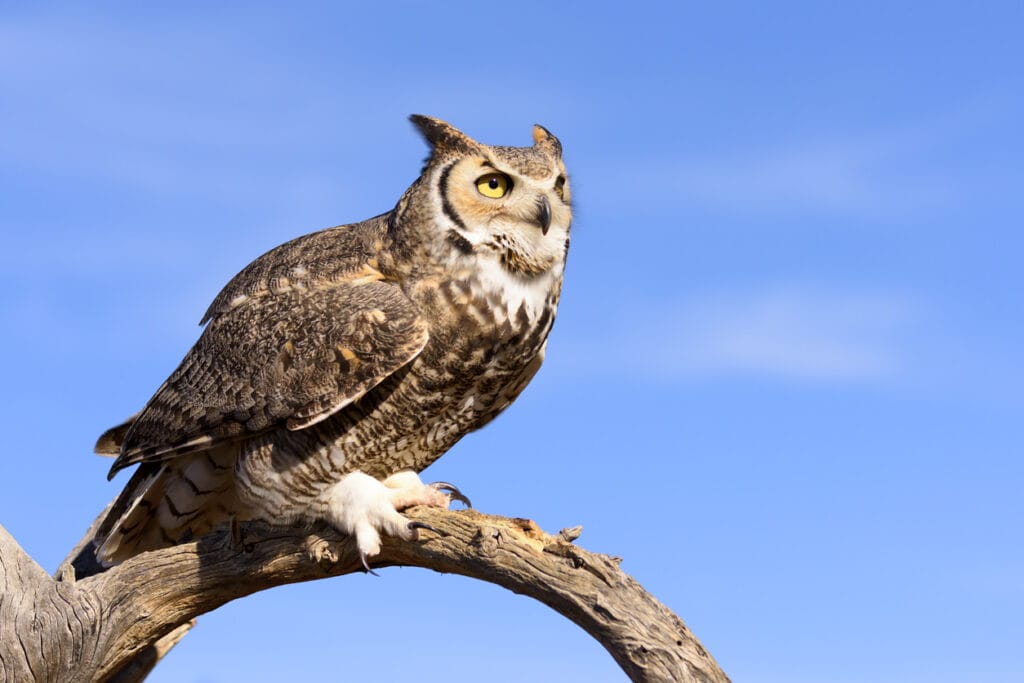
The Great Horned Owl, also known as the Tiger Owl, is a massive, powerful, and fierce raptor that spends the entire year in Arizona. It rarely migrates and usually stays in the same territory for life.
It has a mottled gray-brown plumage, with a pale-brown barring underside. It’s named after its long grayish-brown feathery ear-like tufts, which are its most distinguishing feature. The Great Horned Owl has a reddish-brown face and a pair of menacing yellow eyes.
Great Horned Owls can be found almost anywhere in Arizona—and all over North America—due to their remarkable adaptability. They can be seen in forests, deserts, and swamps. They are also seen in more urban settings, such as cities, parks, and suburbs.
Great Horned Owls have an extremely diverse diet, feeding on over 200 mammal species and approximately 300 bird species. They also eat fish, reptiles, invertebrates, amphibians, and carrion.
They’re mighty nocturnal hunters, but you can spot them perched on tree branches at dusk, waiting for the darkness to fall. What’s more, the Great Horned Owl is a formidable predator that can take down large prey, even those of equal size.
2. Barn Owl

The Barn Owl is a medium-sized owl that’s easily identified by its white-ish, heart-shaped face and a mix of pale rusty-brown mottled feathers. It’s another year-round resident owl species in Arizona. Maricopa County, in particular, has its fair number of Barn Owls.
The eerie beauty and piercing cries of the Barn Owl have earned it monikers such as the Ghost Owl, the Demon Owl, and the Death Owl. In addition, Barn Owls are strictly nocturnal, so they’re mostly seen, or heard, at night.
Don’t be put off by the names, though. Barn Owls are actually quite shy, so they tend to fly away when humans approach them. What’s more, their nests are often tucked away in hidden cavities and crevices, like in tree holes, cliffs, and ridges.
Barn Owls are silent and efficient hunters with an unrivaled ability to track and hunt prey based solely on sound. They can easily locate small prey hidden under dense bushes or snow in complete darkness.
Their diet mostly consists of voles, but they also feed on insects, rodents, lizards, amphibians, birds, and bats. They swallow their prey whole, then regurgitate any unnecessary parts as pellets, which female owls use as nesting material.
3. Burrowing Owl

Burrowing Owls are small-sized, sandy-colored, yellow-eyed owls that can be found all year in Arizona. These owls live mostly in Southern Arizona, but they head to the northern part of the state to breed.
Interestingly, Burrowing Owls are the only raptors that nest and roost underground. They sometimes dig their own burrows, but they often take over burrows made and left behind by other burrowing animals, such as ground squirrels and prairie dogs.
These peculiar owls are fierce protectors of their burrows, capable of mimicking the rattlesnake’s rattle to deter any intruders from entering their dens.
The Burrowing Owl is, unlike most owl species, diurnal and can be found most active in the early morning or late day. It’s also quite tolerant of humans, so they can be seen around parks, roads, and farmlands. Phoenix Valley is the best place in Arizona to see a Burrowing Owl.
Burrowing Owls mainly feed on insects and rodents, but they often eat small birds, amphibians, and lizards. They take any extra food back to their burrows to store it.
4. Whiskered Screech-Owl
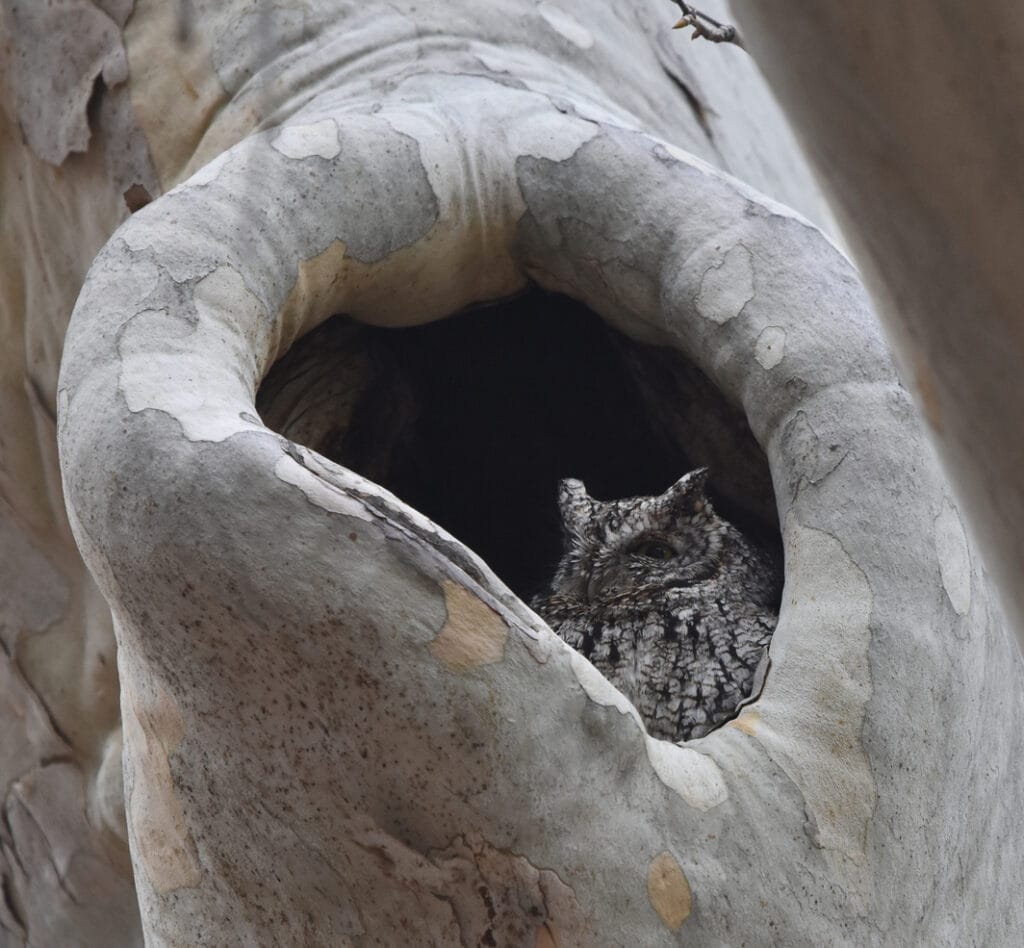
The small-sized Whiskered Screech-Owl has a rounded head, short pointy ear tufts, extra-large yellow eyes, and wispy bristles at the base of its beaks. Its plumage is streaked grey-brown that can take a gray or red morph.
Top Tip: The hoot of a Whiskered Screech-Owl, like that of some Screech-Owls, is not screechy at all. It’s a quieter and more melodious trill.
Little is actually known about these mysterious owls since they’re one of the most difficult owl species to spot. They can only be found in Southeastern Arizona near mountainous areas and canyons.
Whiskered Screech-Owls prefer to nest in the cavities of dense oak and sycamore trees at higher elevations. They hunt by perching high above the ground and swooping down to catch their prey. They also glide through the air in search of insects and bats.
The Whiskered Screech-Owl is a nocturnal predator that mainly feeds on large insects. It occasionally preys on rodents if they’re easy enough to catch.
5. Western Screech-Owl
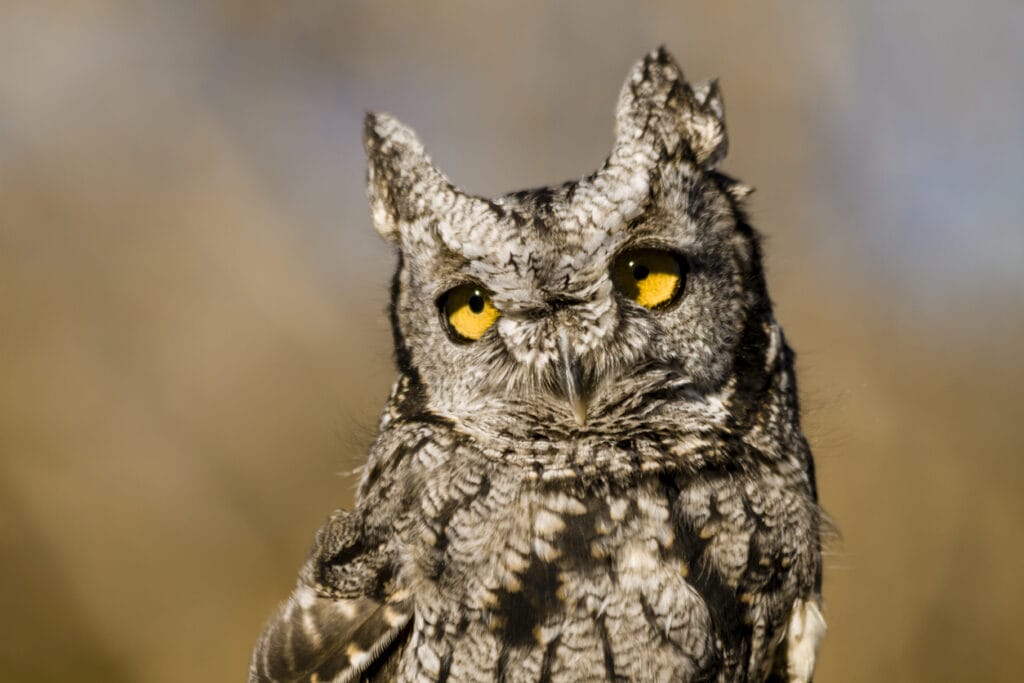
The Western Screech-Owl is a well-camouflaged owl that resembles the Whiskered Screech Owl in appearance but is larger in size. It has a streaked bluish-gray, gray, or dark brown plumage, with large ear tufts.
Unlike Whiskered Screech-Owls, it’s much easier to spot Western Screech-Owls. You can find them throughout the state of Arizona.
They inhabit forests, open woodlands, residential areas, deserts, and open fields. They usually build their nests in cavities, such as those found in tree trunks and cacti.
Not only are Western Screech-Owls nocturnal, but they’re also not huge fans of the Arizona sun. Even so, they can be seen during the day when it’s cloudy.
The Western Screech-Owl mainly eats rodents and birds. That said, it’s an opportunistic predator that feeds on a variety of prey, including prey larger than its own body.
6. Short-eared Owl

Short-eared Owls are medium-sized with rounded heads and tiny ear tufts. Their plumage is mottled brown and white, with dark streaks on its underside. They have piercing yellow eyes that are circled with black rings.
They’re commonly seen throughout Arizona during winter. They stay in open areas, such as grasslands, meadows, and fields with little vegetation. They build their own nests using grass, weed, and feathers on the ground.
These birds of prey are most active and hunt during the day. They fly low over the ground to snatch up their prey in a manner similar to bats or moths.
Short-eared Owls play an important role in restoring balance to ecosystems that have become overrun with mammals. They have a particular taste for voles, but they also feed on other rodents, rabbits, bats, and smaller birds.
7. Long-eared Owl
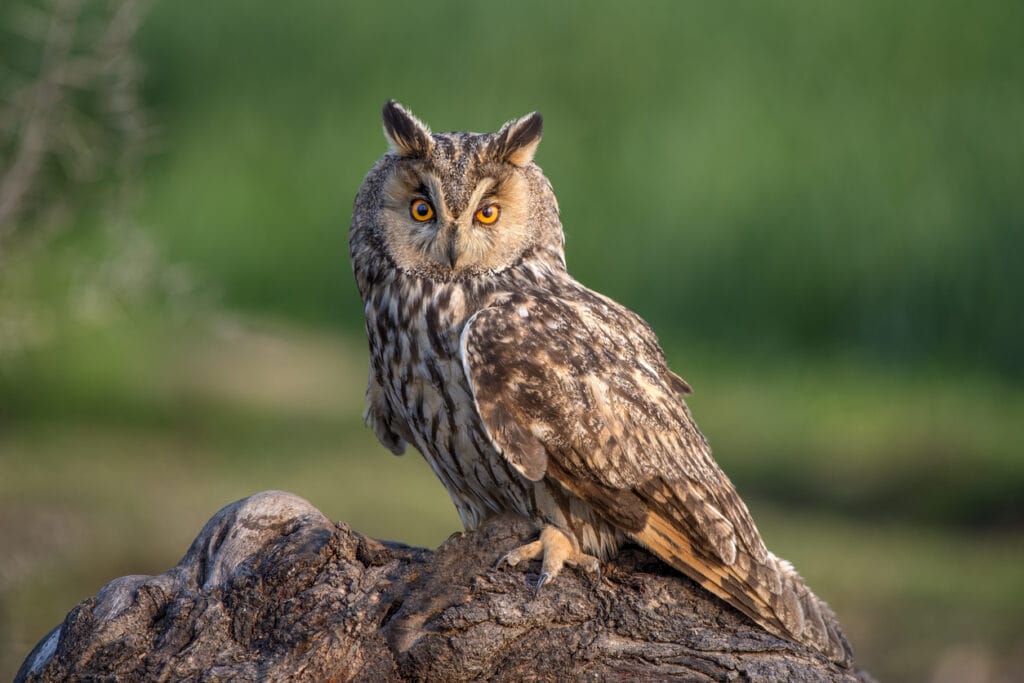
The Long-eared Owl gets its name from its distinctive long ear tufts. It’s medium-sized with an orange face and two white lines between its yellow eyes. It has a complex pattern of black and brown plumage that helps it blend in with its surroundings.
In most cases, Long-eared Owls are difficult to spot unless you know where and when to look. They’re shy and elusive, and their plumage provides excellent camouflage.
What’s more, they prefer to inhabit forests and woodlands near densely vegetated open areas when they’re hunting.
Long-eared Owls are adept nocturnal hunters that can fly silently in complete darkness. They hunt at night, making low, sweeping passes above the ground.
The primary diet of a Long-eared Owl consists of rodents and small rabbits, but it can also include birds, snakes, and lizards.
8. Northern Saw-whet Owl
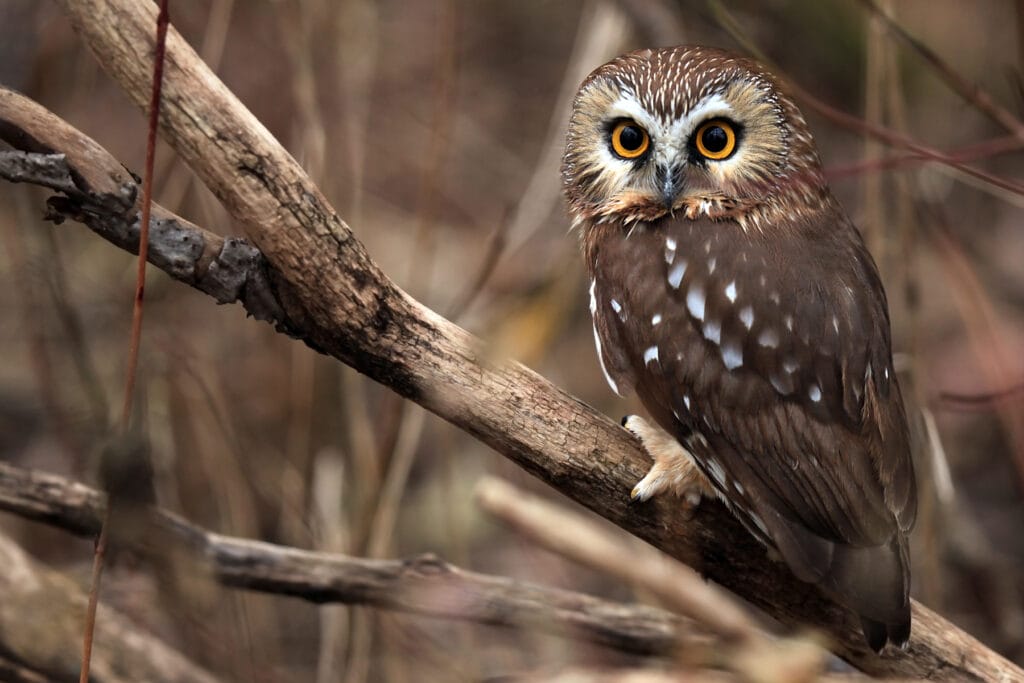
If you see a tiny owl with an oversized head and no ear tufts in Arizona, it’s probably a Northern Saw-whet Owl. This owl is not only the smallest in Arizona but also one of the smallest on the planet.
Northern Saw-whet Owls have cat-like faces and eyes with a white Y-shape extending from their brows to their bills. They have brown plumage with white spots on top and vertical white streaks on the bottom.
Author Note: These small owls inhabit dense coniferous forests most of the year, but they take to deciduous woodlands in the winter. They build their nests in tree cavities, where they stay during the day.
At night, Northern Saw-whet Owls hunt by perching up on low branches and diving to catch their prey in one fluid motion. They primarily hunt rodents, but they occasionally eat insects, small birds, amphibians, and bats.
9. Northern Pygmy Owl
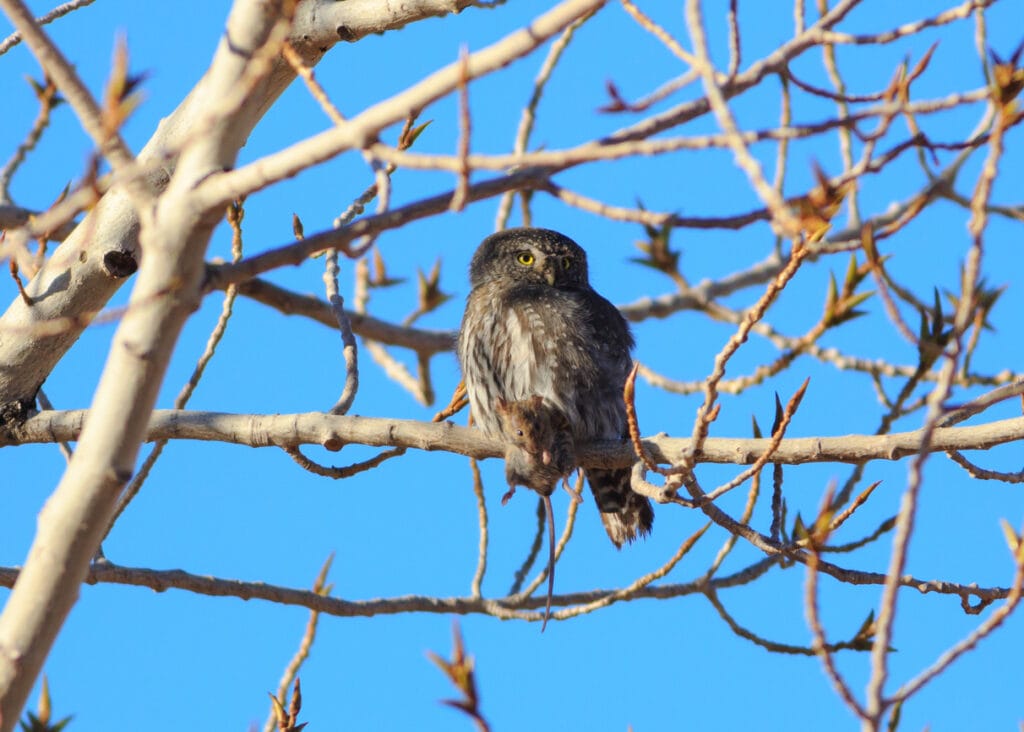
The Northern Pygmy Owl is a small and plump raptor with a large, round head. Its body is brown with white specks on top and white below with dark brown streaks. It has two eye spots on the back of its head meant to deter predators from attacking from behind.
This tiny bundle of feathers can be seen during the day in Northern and Eastern Arizona. It lives in wooded areas with vegetation because these areas are home to many of the animals that this owl prefers to eat.
Northern Pygmy Owls are formidable raptors despite their small size. They can hunt and eat prey three times their size. They’ve even been known to eat chickens.
Their main diet, however, consists of small birds, so you might find them snooping around backyard coneflower feeders. They also feed on rodents, lizards, and insects, storing leftovers in their nesting area or hanging it from thorns.
10. Ferruginous Pygmy Owl
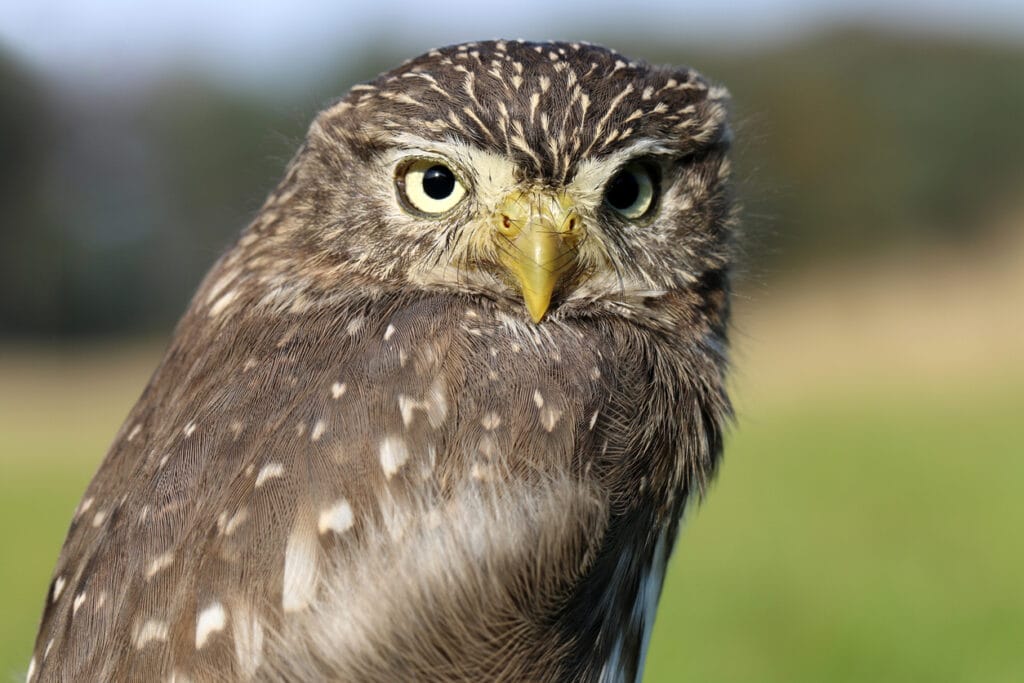
The Ferruginous Pygmy Owl is another small-sized raptor that can only be found in Southeastern Arizona, especially in the Sonoran Desert region. It spends its time either in saguaro cacti or mesquite forests.
Author Note: A Ferruginous Pygmy Owl’s plumage ranges from brown-gray to rusty-red. It also has a pale underside that’s lightly spotted.
These small raptors, like the Northern Pygmy Owl, have two black spots on the back of their heads. These false eyes are meant to scare any predator from approaching from behind.
Ferruginous Pygmy Owls are mostly crepuscular, but they’re usually active during the day. Their diet consists of insects, songbirds, small mammals, and lizards. They’re agile and quick flyers, so they often dart from their nests to snatch their prey.
11. Elf Owl
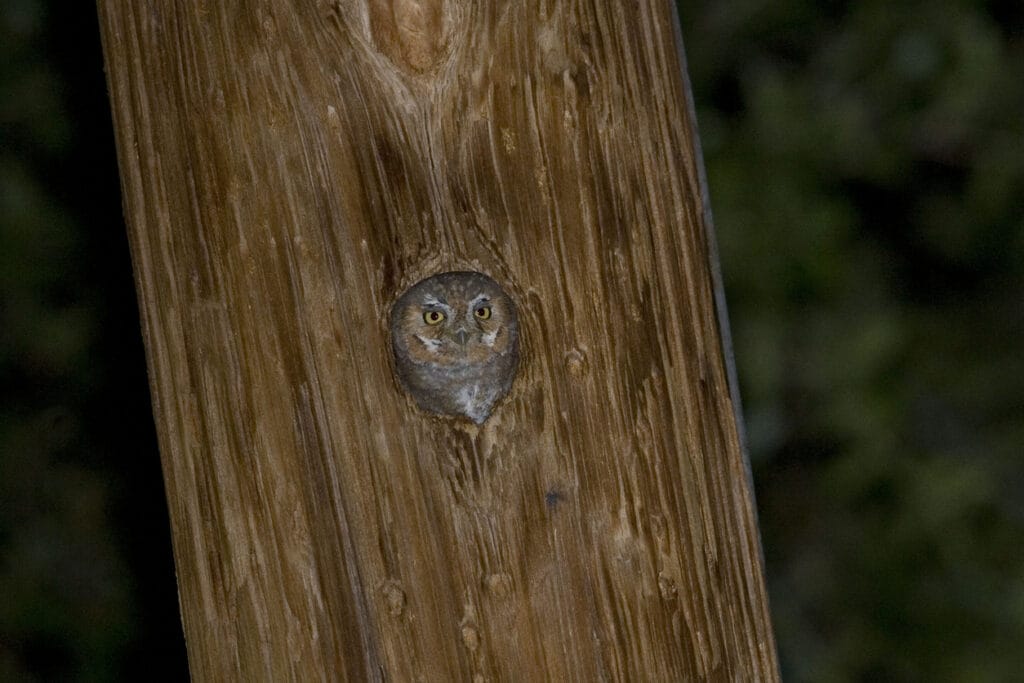
Elf Owls are so small that some of them can fit in the palm of your hand. They also lack ear tufts and have a brownish-gray plumage.
You can find Elf Owls in Arizona during the spring and summer months. They prefer dry habitats, such as brushy woodlands, canyons, and deserts. They’re known to nest high off the ground in tree or saguaro cacti cavities.
These tiny owls are nocturnal predators and are mainly insectivorous. They feed on arachnids, moths, crickets, and beetles. They’ll sometimes eat lizards and other small vertebrate animals. Elf Owls also eat scorpions on occasion, but only after they’ve removed the stinger.
An interesting fact about Elf Owls is that they play dead when they’re threatened.
12. Mexican Spotted Owl
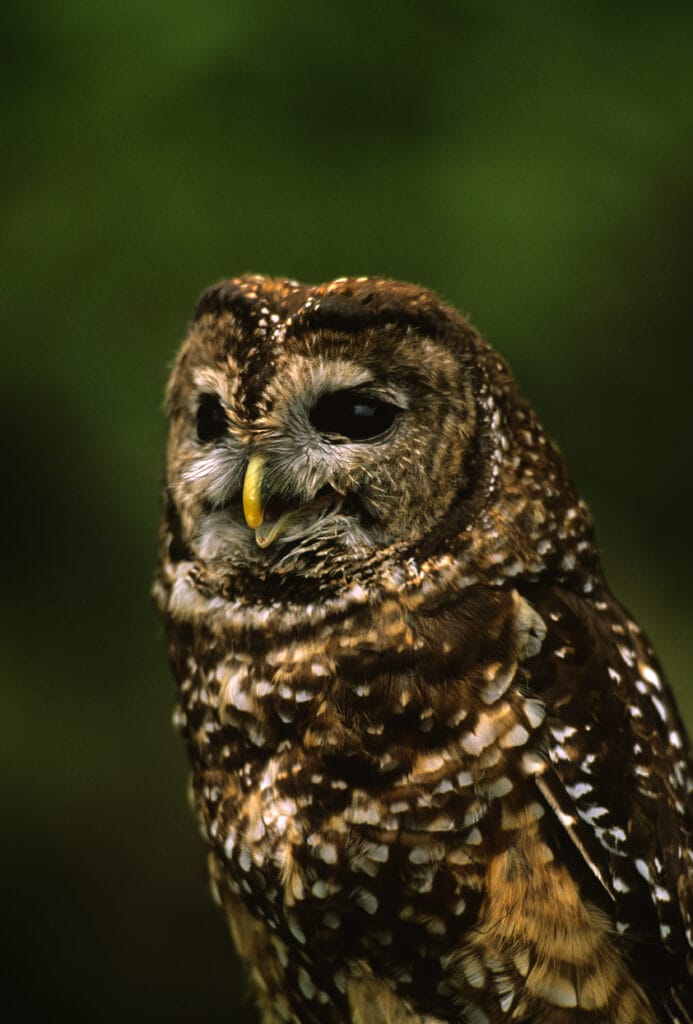
The Mexican Spotted Owl is one of three Spotted Owl subspecies. It’s nearly as large as the Great Horned Owl and is known for its dark brown plumage with white spots and hauntingly dark eyes.
Mexican Spotted Owls are partial to old coniferous forests with dense canopies, pinyon woodlands, and canyons. They build their nests in protected areas, such as in tree cavities and ledges.
This owl species is mostly a nocturnal predator, but it occasionally hunts during the day. It usually waits in trees scanning for prey to pass by.
The Mexican Spotted Owl’s diet mainly consists of small mammals, such as flying squirrels and woodrats. It also feeds on reptiles, bats, and birds.
13. Flammulated Owl
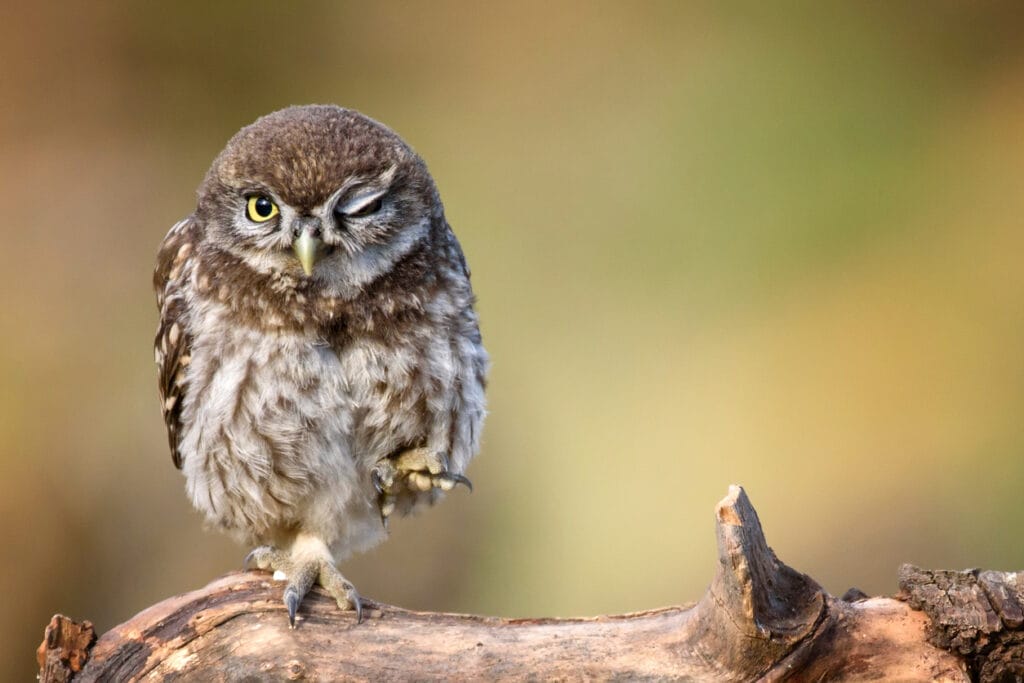
Flammulated Owls are the masters of camouflage. Their plumage is a mix of dark brown, gray, white, and buff, which looks like flame-shaped markings. It helps them blend in with their habitat.
In addition, they have extra-wide windpipes that help them imitate the sounds of larger birds. It also makes it hard for us to find it by sound.
Top Tip: These tiny owls spend winter in Arizona, where they inhabit mature coniferous forests. They often nest in tree cavities made by other birds.
Flammulated Owls mainly feed on insects. They don’t go on elaborate hunts or chase after prey. This is one reason why Flammulated Owls can be difficult to spot.
Conclusion
The climate of Arizona allows for the existence of many different habitats, which attracts various owl species.
It doesn’t matter whether you explore the deserts, forests, or canyons there. You’re guaranteed to see some of the most wonderful creatures with your naked eyes.
And if you’re lucky, you might even see them hunting, eating, nesting, and engaging in a variety of other fascinating activities.
Even if you don’t live in Arizona, the 13 uniquely different owl species are worth the trip into the wilderness.
FAQ
The Barn Owl is the most common species in Arizona. In fact it is one of the most common owls across the world. That makes it probably the most successful owl.
Not only is the Great Horned Owl the most aggressive in Arizona, it is probably the most aggressive in the world. You do not mess with this apex predator.
You probably are hearing the soulful calls of the Mourning Dove which is often mistaken for an owl call.




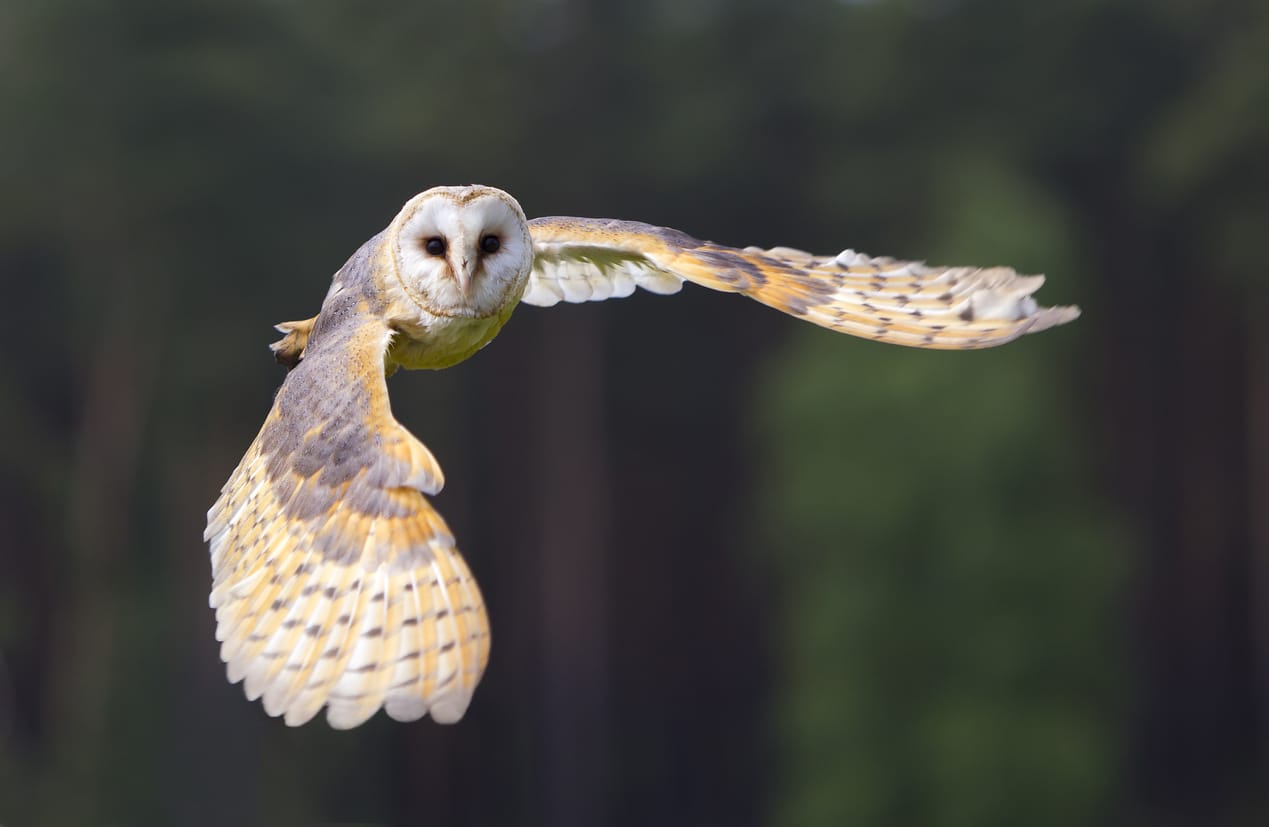
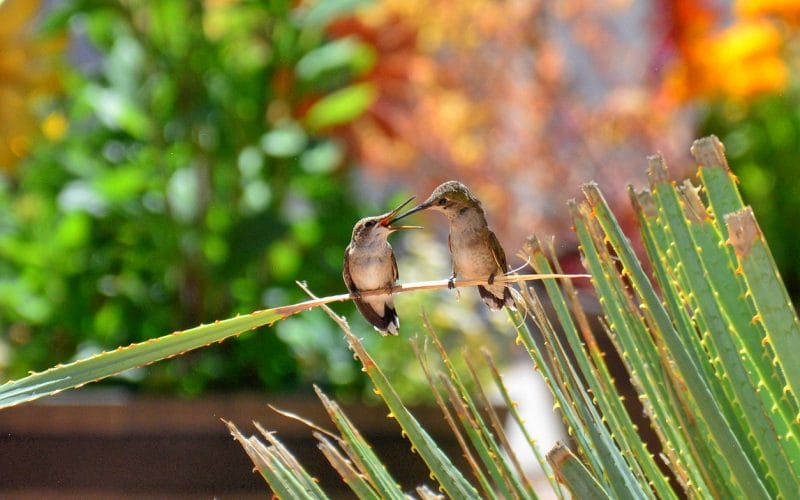
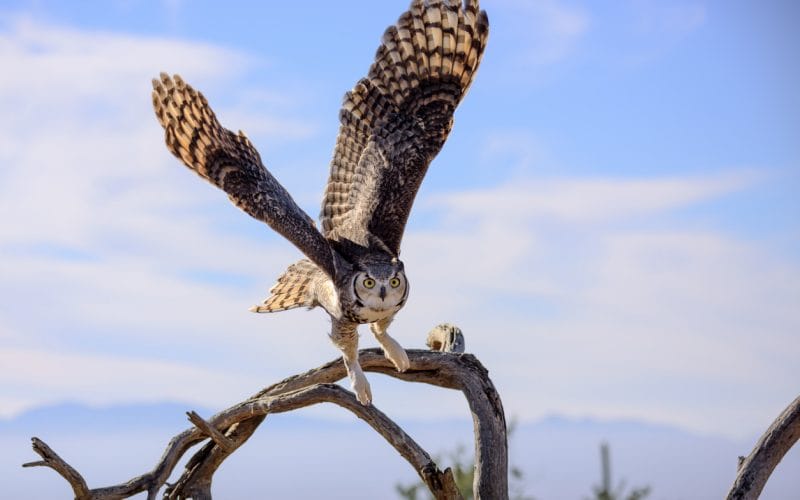

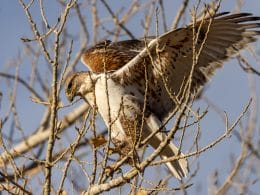


Hi! I’m looking for a contact to get permission to paint one of your barn owl photographs. Thank you!
Hi Kelli – which photo are you interested in? Let me know and I can put you in touch with the photographer.